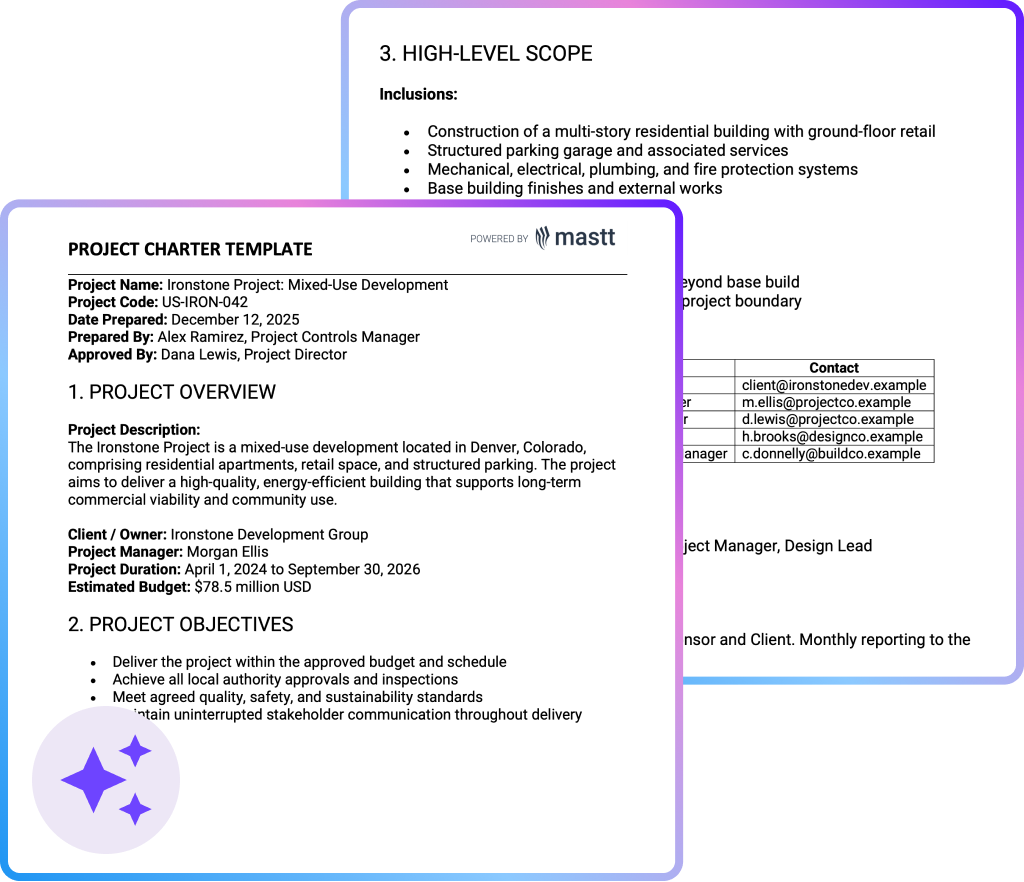A fundamental component of capital project management is a comprehensive understanding of pivotal schedule milestones, of which one such critical stage is Practical Completion.
Not only does practical completion mark a construction project's readiness for operational use or occupancy, but this milestone also reflects the strict adherence to contractual obligations, technical specifications, and regulatory standards to confirm alignment with client expectations.
A thorough grasp of the practical completion milestone is essential for client side project managers to navigate project complexities, meet industry benchmarks, and effectively fulfill contractual obligations.
What is Practical Completion?
Practical Completion (PC) is the milestone within a project's construction phase, representing the point at which all contractual, technical, and regulatory requirements have been met.
This phase involves thorough assessments and inspections, ranging from inspections of finishes, testing and commissioning report analysis all the way through to general adherence to specifications/drawings, as well as compliance verifications with building codes and regulations (from an authorising body).
At this point, the project is considered ready for its intended purpose, albeit minor defects that do not significantly affect functionality or safety may still exist.
Key Components and Definitions

Practical Completion Inspection
A Practical Completion Inspection is a thorough assessment conducted by key stakeholders, the client side project manager and other project consultants to determine if all construction works have been completed as per the contract. This inspection involves scrutinising various aspects of the project in its entirety, such as structural integrity, finishes, services installation, and compliance with relevant regulations and codes.
Practical Completion Certificate
The Certificate of Practical Completion is a formal document issued by the client or their representative, often the project consultant or client side project manager, upon achieving practical completion. This certificate serves as evidence that the contractor has fulfilled their contractual obligations, signalling that the project is now suitable for handover and occupancy.
Despite obtaining practical completion, there may still be minor items or defects to rectify during the Defects Liability Period (DLP), marking a significant milestone towards the project's finalisation.
Practical Completion Checklist
The Practical Completion Checklist is a comprehensive document used during inspections to ensure that all aspects of a construction project meet required standards, covering services (plumbing, electrical and mechanical systems), safety features, finishes, functionality, and compliance with regulations. It is a systematic tool to verify contractual requirements and technical specifications before issuing the Certificate of Practical Completion. It also aids in identifying minor defects for rectification during the DLP, ensuring readiness for handover and occupancy.

Notice of Practical Completion
The Notice of Practical Completion is a formal communication from the contractor to the client, indicating completion of construction tasks and readiness for inspection. This triggers the practical completion inspection process, ensuring compliance with contractual obligations, technical specifications, and regulations before handover.
Occupancy Certificate
An Occupancy Certificate, also known as a Certificate of Occupancy, is obtained after the completion of construction and successful inspection by the relevant authorities. This certificate signifies that the building is safe and compliant with all necessary regulations, including fire safety, structural integrity, sanitation, and accessibility requirements.
It also authorises the building's occupation or use, indicating that it meets all legal and safety criteria for habitation or operational use.
Importance and Significance
Achieving practical completion is a crucial milestone in capital project management for several reasons:
- Handover and Use: It marks the point where the client can take possession of the property and begin its intended use.
- Payment Milestone: In many contracts, practical completion triggers the release of the final payment or retention funds held during the construction phase.
- Defects Liability Period: Following practical completion, there is typically a defects liability period during which the contractor is contractually responsible for rectifying any defects that arise.

Standards and Regulations
Practical completion is governed by various standards and regulations depending on the jurisdiction and type of project. In Australia, standards such as AS4000 (General Conditions of Contract) and AS2124 (General Conditions of Contract) outline the rights and obligations of parties involved in construction contracts, including provisions related to practical completion.
Conclusion
In conclusion, practical completion is a pivotal stage in capital project management that signifies the readiness of a construction project for occupation or use. Every aspect of practical completion plays a significant role in ensuring the successful delivery of construction projects, from inspections and certificates to compliance with standards and regulations. Understanding and effectively managing practical completion is essential for project stakeholders to achieve their goals efficiently and effectively.
Disclaimer: While Mastt is dedicated to offering valuable industry insights, it's important to note that we are not legal experts. Therefore, our content should not be interpreted as legal advice. We encourage readers to exercise discretion and seek personalized guidance from qualified legal professionals.













.avif)

.avif)
